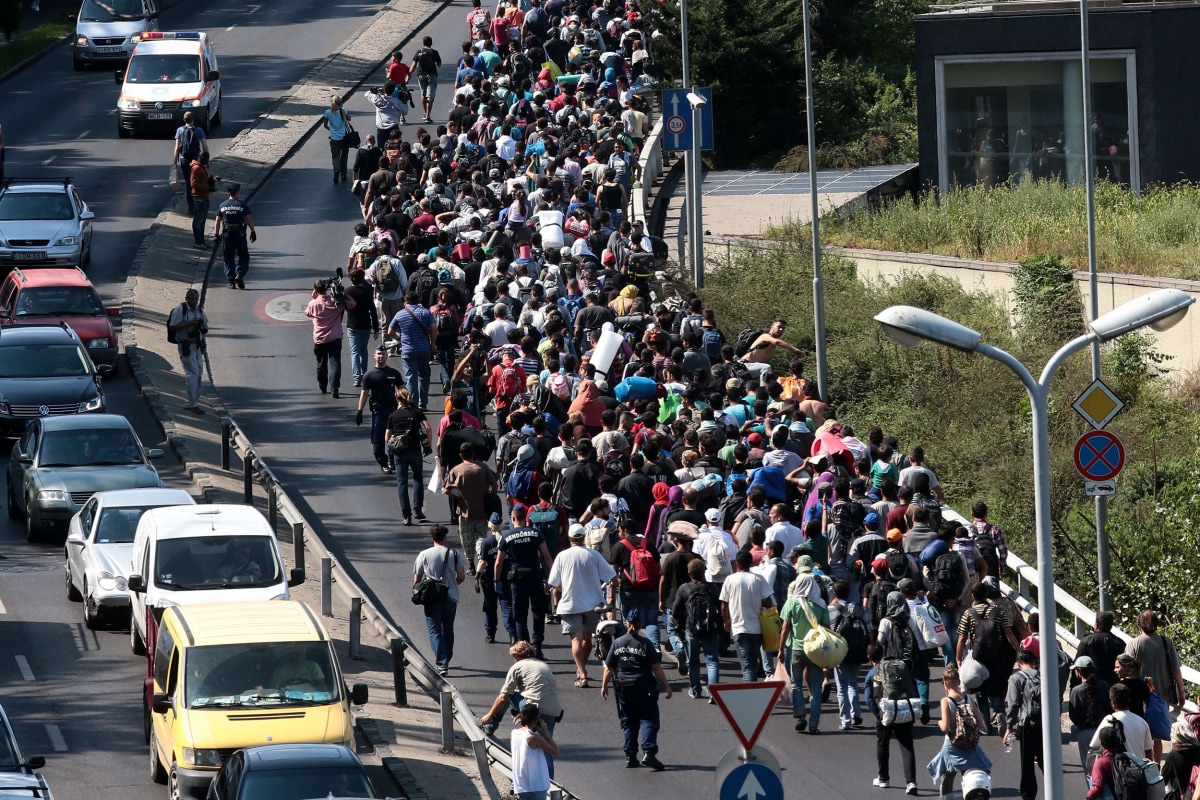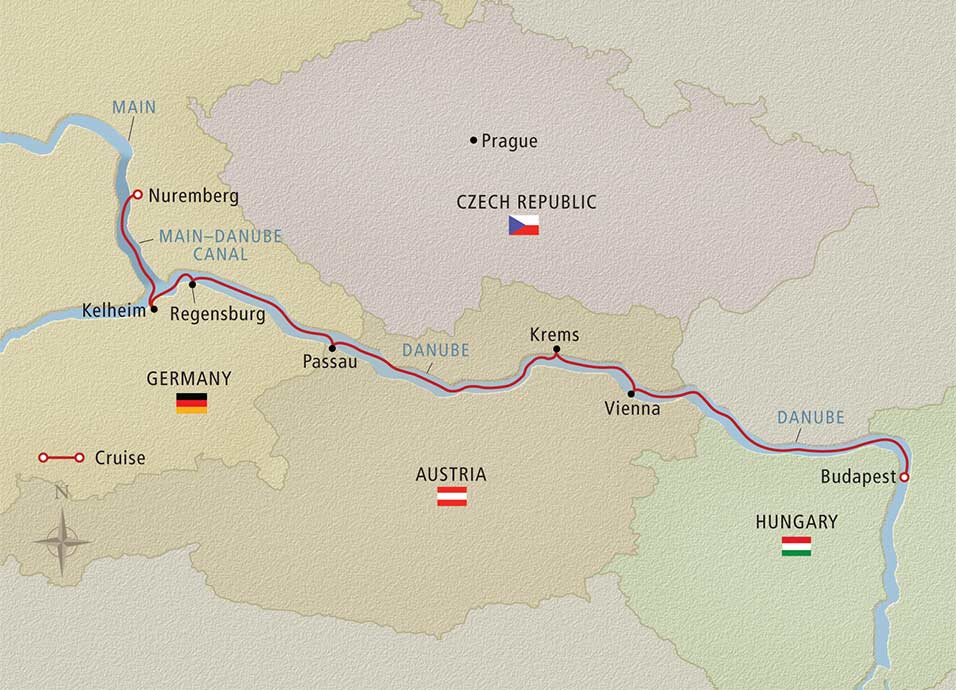 |
| Hungarian Parliament in Budapest |
 |
| Scene at the Keleti railway station in Budapest, Hungary. Photo: Reuters |
 |
| The distance from Budapest to Germany is about 300 miles! photo:http://-nbcnews.com |

Our journey, however, was starkly different than the trip being endured by emigrants. We watched the Danube's scenic banks float by from comfortable deck chairs, while they trudged for miles.
As you can imagine, those on foot were never far from our minds. We increasingly felt the tug-of-war between compassion on those emigrating from danger and the citizens' fear of those immigrating to European physical and economic safety.
The debate was being carried out beneath our noses. Security police blocked our entrance to the Buda Palace,
because European Union leaders were in Budapest to reach consensus between the open invitation to refugees offered by German Chancellor Angela Merkel and Swedish Prime Minister Stefan Lofeven and the closed-door, nationalistic policy of the Hungarian Prime Minister Viktor Orban.
In spite of our empathy toward those fleeing danger, as we toured the historic sights in Budapest, we could at least understand the nationalism of Hungarian leaders.
Over the centuries, Hungary has been tossed between eastern Turkish empires and western Hapsburg monarchs. After being defeated with Germany in World War I, they lost most of their land and population. During World War II, they switched loyalties and fought against Germany. However, in the peace agreement that followed, they were annexed by the Soviet empire. Only in 1989, did they free themselves of Soviet domination. For less than 30 years, they have been trying to regain stability as a free Republic.
As you tour Hungary, reminders of their conflicted history are everywhere. In fact, the whole region shares a repeated theme: citizens versus invaders.

As evidence, the landscape we passed is dotted with fortified castles, refurbished cathedrals, and innumerable war memorials.
Is it any wonder that Hungarians feel a strong nationalism and self-protectionism?
Their pride in their beautiful capital, Budapest, is certainly justified. At night it is spectacular!
Budapest is a twin city like Dallas/Fort Worth or Minneapolis/St. Paul. Buda (the wealthy upperclass part of the city on the hilly west bank of the Danube) was connected with the more plebeian Pest district (on the flatter eastern river bank) in 1873, when engineers were able to construct a suspension bridge. Even today, the Chain Bridge is a marvel.
No wonder Budapest is dubbed "Queen of the Danube". At night, the illuminated Parliament building is dazzling.
Strings of lights twinkle from the now seven bridges spanning the Danube River.
In the post to follow, Budapest's landmarks will illustrate their historic struggles against outsiders. In turn, perhaps we can begin to comprehend the emigrant vs. immigrant divide. The past certainly helps us to understand the present.
Strings of lights twinkle from the now seven bridges spanning the Danube River.
In the post to follow, Budapest's landmarks will illustrate their historic struggles against outsiders. In turn, perhaps we can begin to comprehend the emigrant vs. immigrant divide. The past certainly helps us to understand the present.












No comments:
Post a Comment